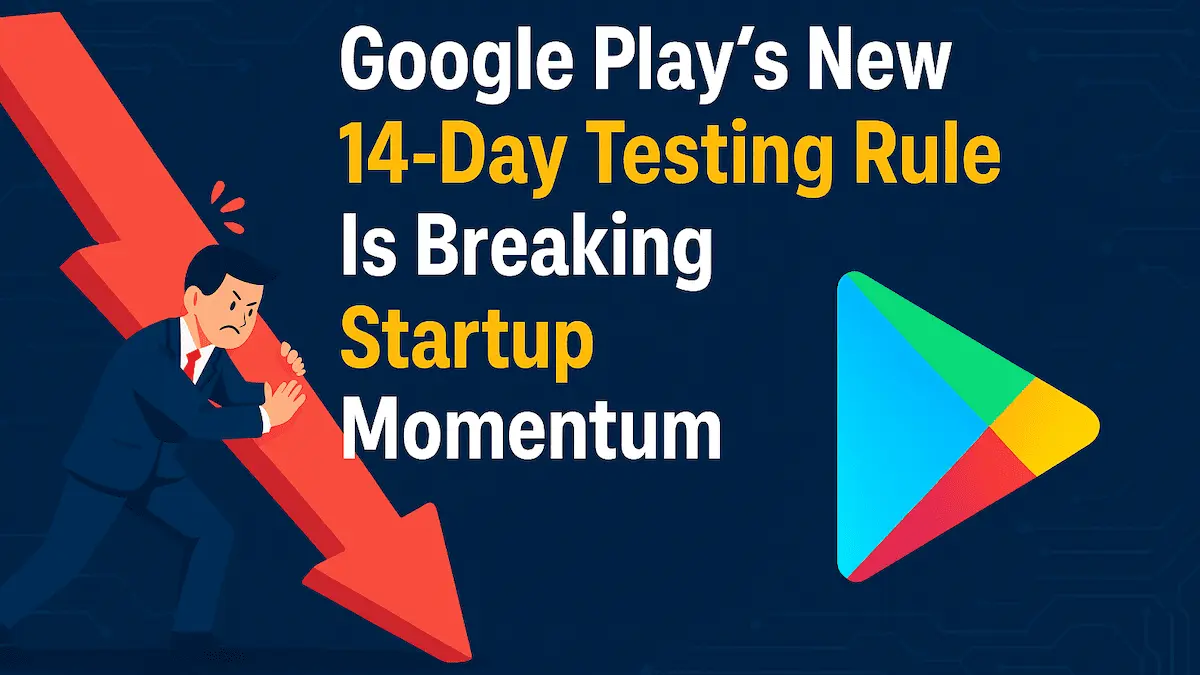
This one’s been bothering me for a while.
If you’re an Android developer or a small startup trying to ship your next app, you’ve probably run into Google Play’s new 14-day testing rule — and yeah, it’s not fun.
A lot of developers are saying the same thing:
They followed every guideline, tested with real users for 14 days, gathered feedback… and still got hit with this message:
“More testing required before you can access production.”
No explanation. No metrics. Just another 14 days of waiting.
For small teams, this kind of delay can completely kill momentum. You lose users, motivation, and sometimes the will to touch the Play Console again.
So let’s unpack what’s going on — and more importantly, how to get past it.
🧠 What’s the Deal with This 14-Day Rule?
Google Play now requires all new developer accounts (and newly created apps under them) to go through a mandatory 14-day closed testing phase before you can publish publicly.
The intention sounds reasonable — to make sure apps are properly tested before launch.
But in practice, the rule has become a confusing, unpredictable roadblock.
Even after doing everything right, some developers are being told to test again — with zero clarity on what failed or what’s missing.
There’s no visible progress indicator. No defined “success” metric.
Just an automated decision and a generic message.
😩 Why It’s a Problem for Indie Developers
If you’re a solo dev or a small team, every extra day counts.
When your release is stuck in a 14-day loop, you’re not getting feedback from real users, your marketing timelines slip, and your team morale drops fast.
This system might help filter spammy or low-effort apps, but for legitimate builders, it’s just unnecessary friction.
We believe in testing and quality — but testing should be measurable and transparent, not a guessing game run by hidden algorithms.
🧩 What Actually Works (From My Experience Publishing 100+ Apps)
After testing this process across multiple projects, here’s what really helps bypass or streamline the waiting game.
1. ⚡ Publish Using an Older Developer Account
If you or your team has access to an older Google Play Console account (created before this rule existed), you can still publish apps directly without the mandatory testing period.
Launch your app there, and once it’s live and stable, transfer it to your primary developer account.
Not glamorous, but it’s easily the fastest way to get your app out.
2. 👥 Use Diverse Tester Emails
Google doesn’t clearly say this anywhere, but your tester list can’t all be from the same email domain or organization.
If all testers are, say, @yourcompany.com, it won’t count as valid testing.
You need real diversity — Gmail, Outlook, Yahoo, etc.
Ask friends, family, and a few active users with personal emails to join the test.
That’s how Google verifies your testers are genuine, not internal bots.
3. 📱 Ensure Real Usage During Testing
Adding testers isn’t enough. At least 50% of them must use your app daily, even for a few seconds.
Open the app, navigate a few screens, trigger a feature — that activity signals to Play Console that the testing is real.
If testers just install the app and never open it again, Google assumes your test is inactive.
4. 🧾 Submit the Testing Report Properly
After 14 days, you’ll be asked to fill a short form summarizing your testing process.
Here’s what should go in there:
-
What features you tested
-
What bugs you fixed
-
What improvements you made
-
What feedback you received
-
Who your testers were and how they used the app
Keep it professional and structured — Google’s review team takes this report seriously.
5. 🪪 Handling the D-U-N-S Number
If you’re setting up a business developer account, you’ll need a D-U-N-S number.
This process feels painfully bureaucratic.
The verification takes weeks, and if you miss even one document, they’ll inform you after 30 days… and the cycle repeats.
Save yourself the headache — contact a Chartered Accountant (CA) who can manage the paperwork. They know exactly how to navigate this system.
6. 🌍 Try Alternative App Stores for Early Distribution
Don’t let the Play Store delay freeze your progress.
Distribute your app early using other trusted stores like:
-
Huawei AppGallery
-
Samsung Galaxy Store
-
Mi Store
-
Amazon Appstore
These platforms are great for collecting early user feedback, testing engagement, and keeping momentum alive while Google takes its time.
💡 What Google Could Do Better
Developers aren’t against testing — we just want clarity.
Here’s what could make this process sane again:
-
Show a progress dashboard for testing compliance.
-
Reveal engagement stats Google actually checks.
-
Offer a fast-track option for verified or experienced developers.
We don’t mind rules — we mind silence.
🧠 Final Thoughts
Having published more than 100 apps across different accounts, I’ve seen every phase of the Play Store ecosystem — from the open days to this new, tightly controlled one.
This new 14-day rule is well-intentioned but painfully vague. It ends up punishing the builders who care most about shipping quality products.
Until Google adds transparency, the best path forward is to stay smart:
use older accounts, keep real testers active, submit detailed reports, and don’t be afraid to explore alternate stores.
Because waiting isn’t building.
Made with ❤️ by codewithpk.com
Keep shipping. Keep learning. Keep building.
